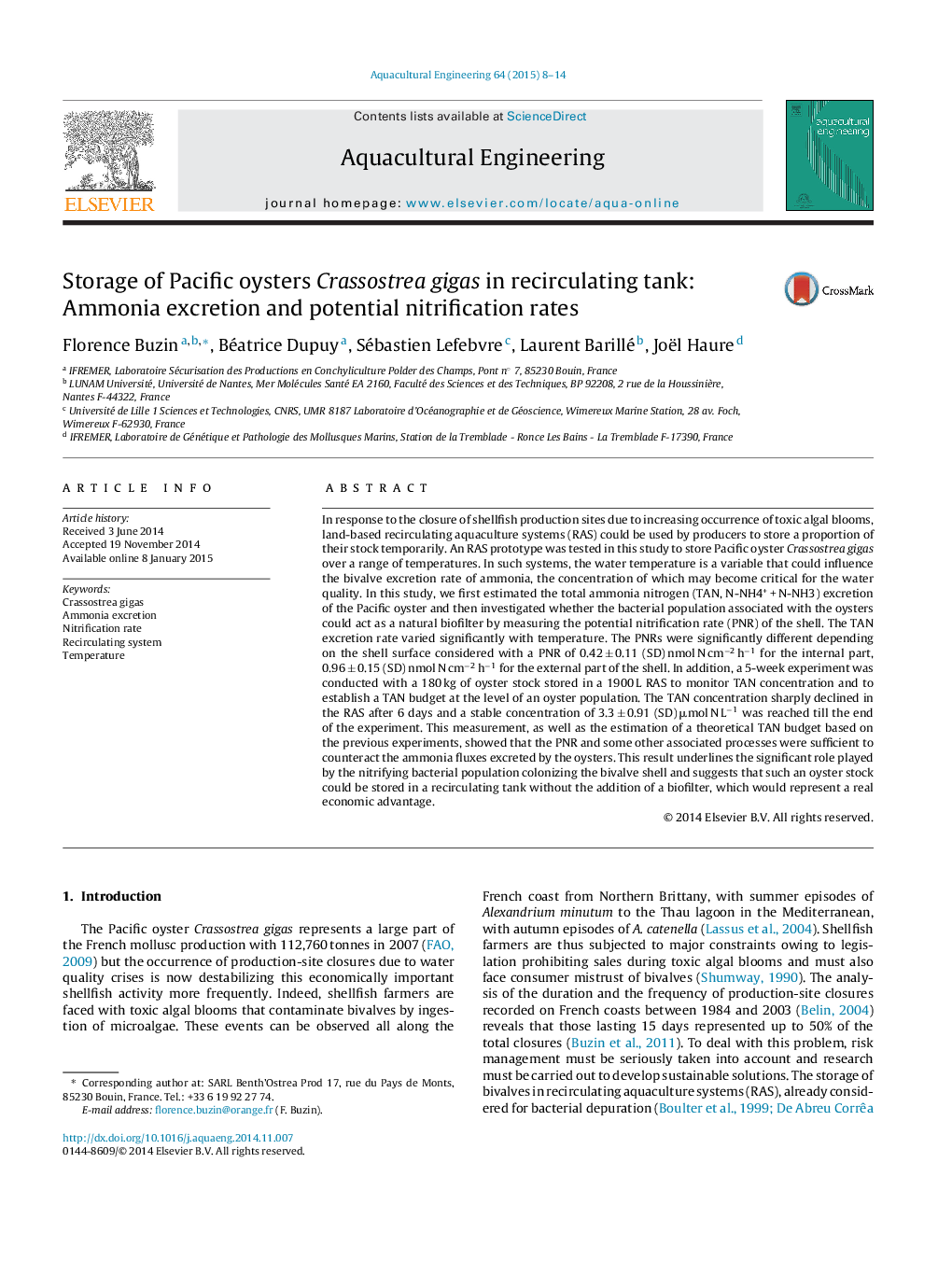| Article ID | Journal | Published Year | Pages | File Type |
|---|---|---|---|---|
| 6381311 | Aquacultural Engineering | 2015 | 7 Pages |
Abstract
In response to the closure of shellfish production sites due to increasing occurrence of toxic algal blooms, land-based recirculating aquaculture systems (RAS) could be used by producers to store a proportion of their stock temporarily. An RAS prototype was tested in this study to store Pacific oyster Crassostrea gigas over a range of temperatures. In such systems, the water temperature is a variable that could influence the bivalve excretion rate of ammonia, the concentration of which may become critical for the water quality. In this study, we first estimated the total ammonia nitrogen (TAN, N-NH4+ + N-NH3) excretion of the Pacific oyster and then investigated whether the bacterial population associated with the oysters could act as a natural biofilter by measuring the potential nitrification rate (PNR) of the shell. The TAN excretion rate varied significantly with temperature. The PNRs were significantly different depending on the shell surface considered with a PNR of 0.42 ± 0.11 (SD) nmol N cmâ2 hâ1 for the internal part, 0.96 ± 0.15 (SD) nmol N cmâ2 hâ1 for the external part of the shell. In addition, a 5-week experiment was conducted with a 180 kg of oyster stock stored in a 1900 L RAS to monitor TAN concentration and to establish a TAN budget at the level of an oyster population. The TAN concentration sharply declined in the RAS after 6 days and a stable concentration of 3.3 ± 0.91 (SD) μmol N Lâ1 was reached till the end of the experiment. This measurement, as well as the estimation of a theoretical TAN budget based on the previous experiments, showed that the PNR and some other associated processes were sufficient to counteract the ammonia fluxes excreted by the oysters. This result underlines the significant role played by the nitrifying bacterial population colonizing the bivalve shell and suggests that such an oyster stock could be stored in a recirculating tank without the addition of a biofilter, which would represent a real economic advantage.
Related Topics
Life Sciences
Agricultural and Biological Sciences
Aquatic Science
Authors
Florence Buzin, Béatrice Dupuy, Sébastien Lefebvre, Laurent Barillé, Joël Haure,
